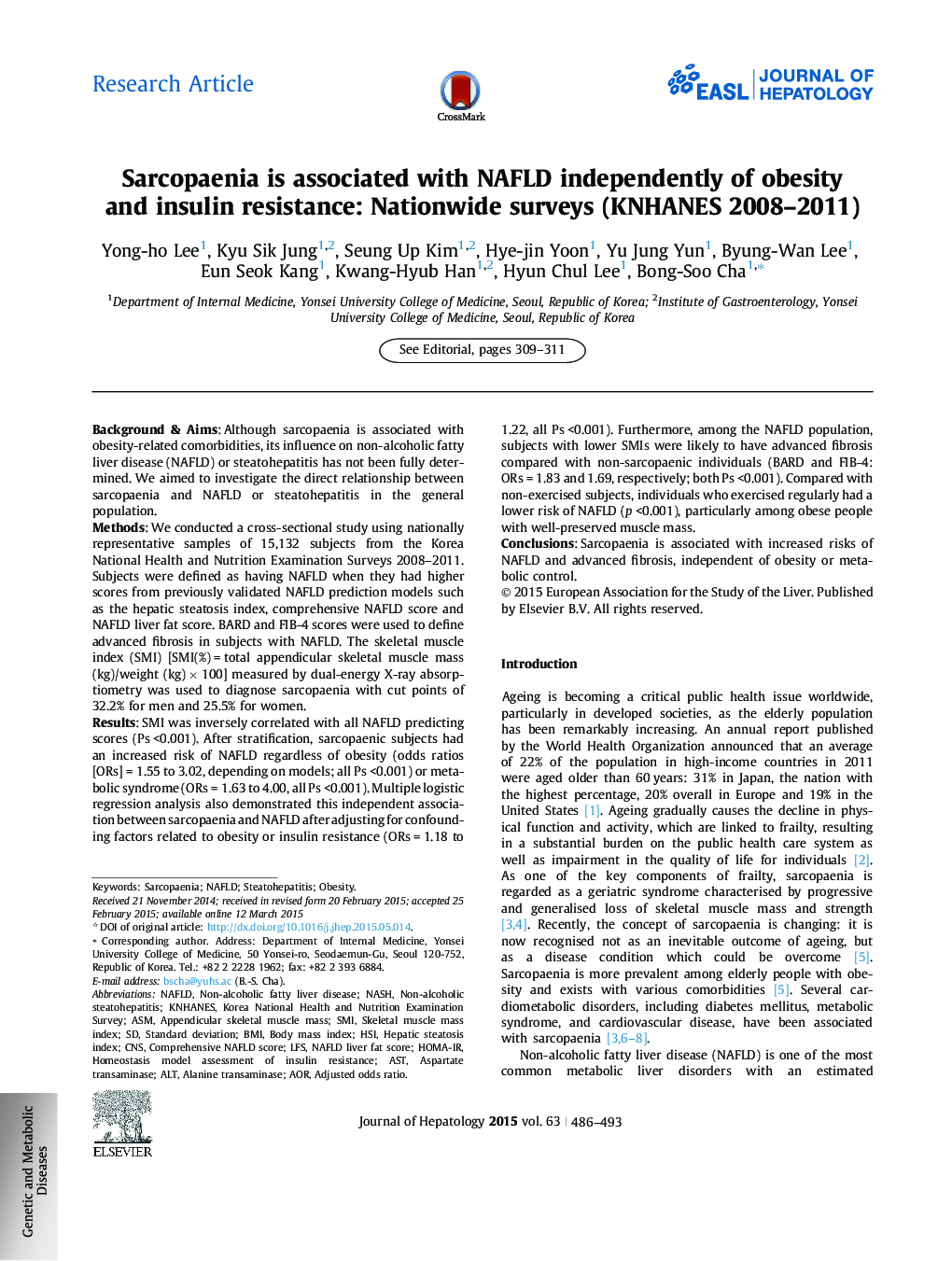| کد مقاله | کد نشریه | سال انتشار | مقاله انگلیسی | نسخه تمام متن |
|---|---|---|---|---|
| 6101552 | 1211106 | 2015 | 8 صفحه PDF | دانلود رایگان |

Background & AimsAlthough sarcopaenia is associated with obesity-related comorbidities, its influence on non-alcoholic fatty liver disease (NAFLD) or steatohepatitis has not been fully determined. We aimed to investigate the direct relationship between sarcopaenia and NAFLD or steatohepatitis in the general population.MethodsWe conducted a cross-sectional study using nationally representative samples of 15,132 subjects from the Korea National Health and Nutrition Examination Surveys 2008-2011. Subjects were defined as having NAFLD when they had higher scores from previously validated NAFLD prediction models such as the hepatic steatosis index, comprehensive NAFLD score and NAFLD liver fat score. BARD and FIB-4 scores were used to define advanced fibrosis in subjects with NAFLD. The skeletal muscle index (SMI) [SMI(%) = total appendicular skeletal muscle mass (kg)/weight (kg) Ã 100] measured by dual-energy X-ray absorptiometry was used to diagnose sarcopaenia with cut points of 32.2% for men and 25.5% for women.ResultsSMI was inversely correlated with all NAFLD predicting scores (Ps <0.001). After stratification, sarcopaenic subjects had an increased risk of NAFLD regardless of obesity (odds ratios [ORs] = 1.55 to 3.02, depending on models; all Ps <0.001) or metabolic syndrome (ORs = 1.63 to 4.00, all Ps <0.001). Multiple logistic regression analysis also demonstrated this independent association between sarcopaenia and NAFLD after adjusting for confounding factors related to obesity or insulin resistance (ORs = 1.18 to 1.22, all Ps <0.001). Furthermore, among the NAFLD population, subjects with lower SMIs were likely to have advanced fibrosis compared with non-sarcopaenic individuals (BARD and FIB-4: ORs = 1.83 and 1.69, respectively; both Ps <0.001). Compared with non-exercised subjects, individuals who exercised regularly had a lower risk of NAFLD (p <0.001), particularly among obese people with well-preserved muscle mass.ConclusionsSarcopaenia is associated with increased risks of NAFLD and advanced fibrosis, independent of obesity or metabolic control.
Journal: Journal of Hepatology - Volume 63, Issue 2, August 2015, Pages 486-493